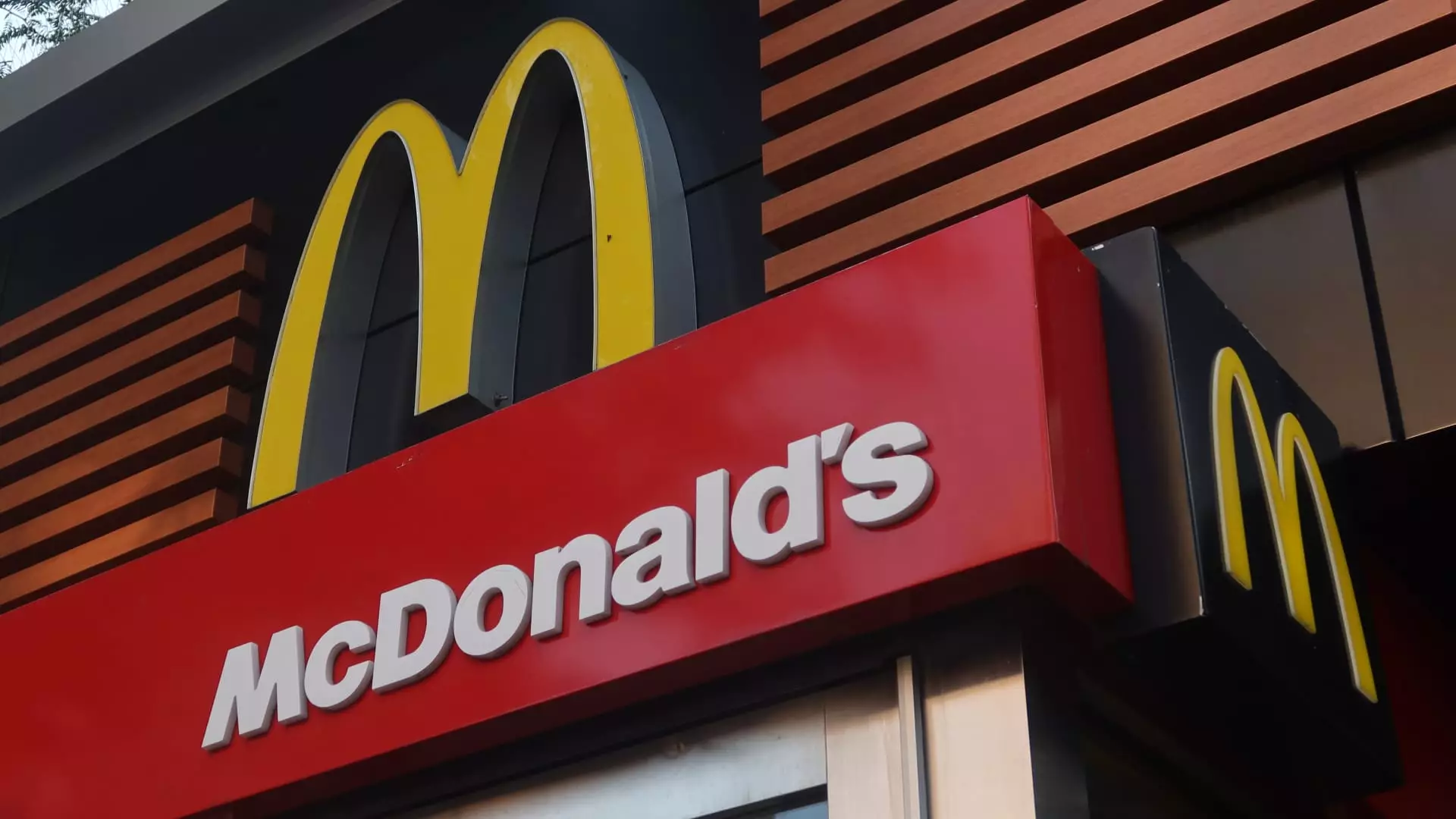McDonald’s recent earnings report appears at first glance as a shining example of resilience in the fast-food industry, with revenue and earnings notably surpassing expectations. The company’s ability to generate a 5% revenue increase and a sizable bounce in same-store sales ostensibly suggests a robust rebound amid economic headwinds. However, a closer, more critical analysis reveals that this apparent strength masks underlying vulnerabilities rooted in broader economic realities and shifting consumer behaviors. While executives trumpet their quarter as a success, their cautious tone about the low-income consumer reveals a fragile foundation that could threaten sustained growth. It’s tempting to see these results as a testament to McDonald’s agility, but given the economic strain faced by their core demographic, the optimism may be misplaced or overly confident.
The Illusion of Strength in a Bifurcated Market
One of the core issues McDonald’s faces isn’t just competition—it’s the economic divide that impacts consumer spending patterns. The company’s leadership recognizes that low-income families are still reluctant or unable to visit as frequently as they did pre-pandemic, citing double-digit declines in visits among this group. Their efforts to make menu items more affordable, such as the $5 meal deal and promotional offers like the Daily Double, are reactive measures that reveal an underlying challenge: the margins on extremely low-priced offerings are tight, and their success depends heavily on foot traffic from a demographic that is increasingly squeezed by inflation and stagnant wages. Their strategy to boost traffic through promotions and value offerings is a band-aid, not a cure. Relying heavily on these low-cost promotions—such as returning Snack Wraps at a promotional price—can undermine the perception of brand quality and long-term profitability.
Moreover, McDonald’s international markets—especially in regions like Japan and China—fared better. This discrepancy underscores a critical vulnerability: their domestic success remains tied to an unstable economic segment. As the U.S. economy continues to grapple with inflationary pressures, rising living costs, and wage stagnation, McDonald’s risk fragile growth that could unravel if this demographic continues contracting or becomes more price-sensitive.
The Illusion of Competitive Superiority in a Challenged Industry
McDonald’s CEO Chris Kempczinski points to “better performance” than rivals in same-store sales and traffic, but this should be interpreted with caution. The quick-service restaurant industry overall remains in decline—particularly among low-income consumers—making competitive performance somewhat less meaningful. Their report hints at a hard truth: McDonald’s success is increasingly linked to international markets that are less saturated and more receptive to value propositions. In the U.S., however, the company is battling an uphill climb against economic realities and consumer fatigue.
Furthermore, promotional tactics like tie-ins with movies or limited-time menu items provide temporary boosts rather than a sustainable model. These campaigns can inflate short-term margins and create a false sense of stability. If consumer confidence continues to erode or inflation persists, these strategies will lose their efficacy. It’s worth questioning whether McDonald’s is genuinely innovating or simply applying bandages to a bleeding wound. Relying on promotional offers and menu gimmicks may yield short-term results, but they do nothing to address long-term issues of value perception, consumer trust, and economic hardship among their main clientele.
What Truly Lies Ahead for McDonald’s?
Looking forward, McDonald’s optimistic forecast for the second half of the year appears overly confident. The company expects stronger results, aided by easier comparison figures, but the foundation remains shaky. Unless McDonald’s redefines its approach to value—moving beyond superficial promotions and focusing on true affordability, quality, and sustainability—their growth could plateau or even reverse. The company is caught in a dilemma: serve the low-income demographic at razor-thin margins or push toward higher-income customers who might be less attracted to fast-food offerings in a tightening economy.
If history teaches us anything, it’s that reliance on promotional tactics in a declining economic environment is ultimately unsustainable. McDonald’s must rethink what “value” means in a time of economic uncertainty. Instead of merely lowering prices, they should focus on delivering genuine quality and leveraging technology-based convenience that appeals across income levels without sacrificing margins. Their international success demonstrates that consumers are receptive to value, but only if it’s perceived as authentic, not superficial.
The recent upbeat earnings report—while impressive at face value—belies the underlying challenges McDonald’s faces. Its growth is fragile, heavily dependent on promotional efforts and international markets with less economic strain. The real test begins as the company navigates a potentially prolonged period of economic adversity, and its future depends on whether it can innovate beyond quick fixes or fall into the trap of temporary boosts that mask deeper issues.

